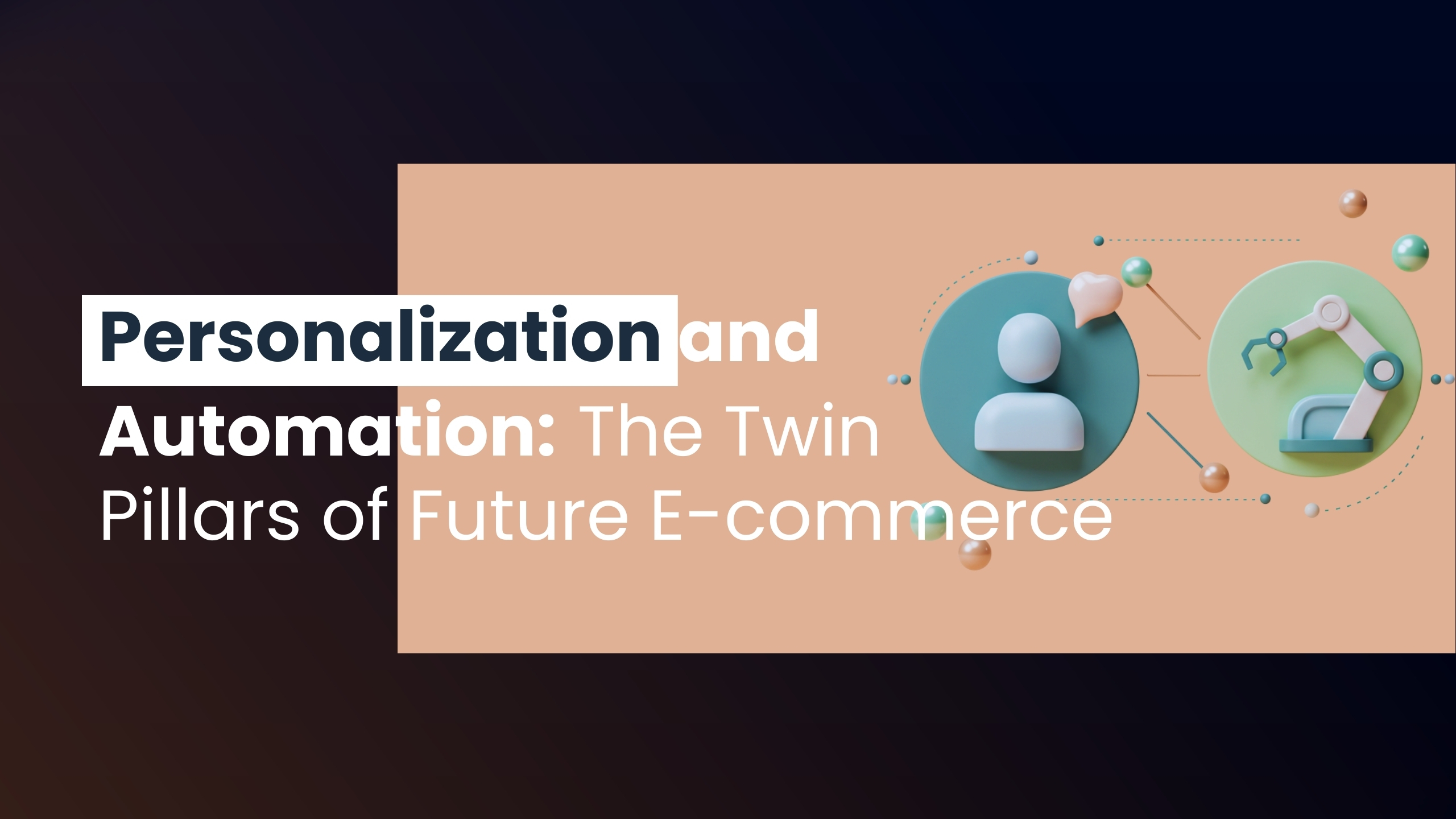Personalization and Automation: The Twin Pillars of Future E-commerce
The future of e-commerce is built on two powerful pillars: personalization and automation. As consumers demand more tailored experiences and businesses seek greater efficiency, these strategies are set to transform online retail. By integrating advanced technologies, retailers can deliver unique shopping journeys while optimizing operational processes.
- The Rise of Personalization in E-commerce
Tailored Customer Experiences:
• Advanced algorithms and AI analyze customer data to offer personalized product recommendations.
• Customized shopping experiences increase customer satisfaction and drive higher conversion rates.
Benefits of Personalization:
• Enhances customer loyalty through relevant content and offers.
• Increases average order values by suggesting complementary products.
- Automation: Streamlining Operations for Efficiency
Optimizing Processes:
• Automation tools like chatbots and automated fulfillment systems reduce manual workload and improve response times.
• Real-time inventory management and order processing streamline operations, reducing errors and costs.
Operational Advantages:
• Lower operational expenses and faster service lead to improved profitability.
• Automation enables scalability, helping retailers manage growing demand effortlessly.
- The Synergy Between Personalization and Automation
Integrated Strategies:
• When combined, personalization and automation create a seamless, efficient shopping experience that meets individual customer needs while optimizing backend processes.
• Data collected from automated systems can further refine personalized recommendations, creating a continuous feedback loop.
Real-World Impact:
• Retailers using these integrated approaches report improved conversion rates and customer retention, as well as smoother operational flows that adapt quickly to market changes.
- Implementation Strategies for Future E-commerce
Invest in Advanced Technologies:
• Leverage AI, machine learning, and data analytics platforms to drive personalized experiences and automate routine tasks.
• Integrate unified data systems to provide a single view of customer interactions across all channels.
Prioritize Training and Integration:
• Ensure your team is equipped to handle new technologies through ongoing training and support.
• Gradually integrate automation and personalization tools to minimize disruptions and maximize ROI.
- Challenges and Considerations
Technical Integration:
• Merging new systems with legacy technology can be complex. Ensure compatibility and scalability for future growth.
Data Privacy and Security:
• Handle customer data responsibly with robust security measures and compliance with privacy regulations.
Balancing Automation and Human Touch:
• While automation improves efficiency, maintaining a personal connection with customers remains essential. Find the right balance to avoid alienating your audience.
- Future Outlook
Continuous Innovation:
• Emerging technologies such as predictive analytics and advanced natural language processing will further enhance personalization and automation capabilities.
Enhanced Customer Journeys:
• Expect a future where seamless integration of personalized experiences and automated processes becomes the norm, setting new standards in online retail.
FAQ
Q: What is the main advantage of personalization in e-commerce?
A: Personalization enhances customer experiences by delivering tailored recommendations and offers, which leads to increased satisfaction, loyalty, and higher conversion rates.
Q: How does automation benefit online retailers?
A: Automation streamlines operations such as inventory management and customer support, reducing manual workload and operational costs while improving efficiency.
Q: How can personalization and automation work together?
A: Data from automated systems helps refine personalized marketing strategies, while personalized experiences drive customer engagement, creating a synergistic effect that boosts overall performance.
Conclusion
Personalization and automation are revolutionizing the future of e-commerce by delivering highly tailored customer experiences and streamlining business operations. By embracing these twin pillars, retailers can enhance satisfaction, drive sales, and position themselves ahead of the competition in an ever-evolving digital landscape.
Share your thoughts on how personalization and automation are transforming your e-commerce experience in the comments below or contact our team for personalized advice on integrating these technologies into your retail strategy. Let’s shape the future of online retail together!

